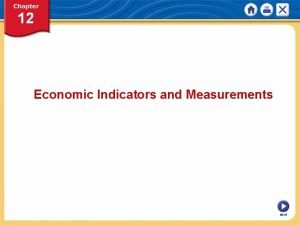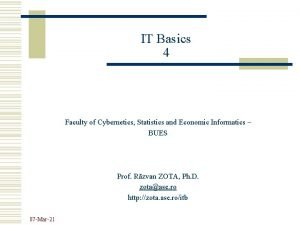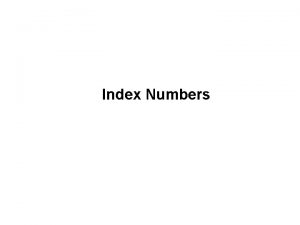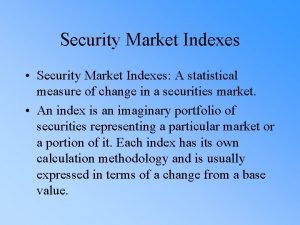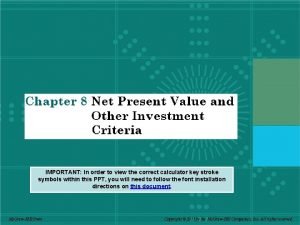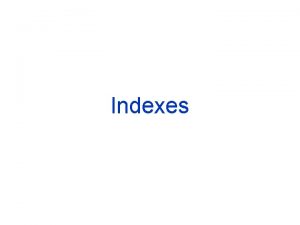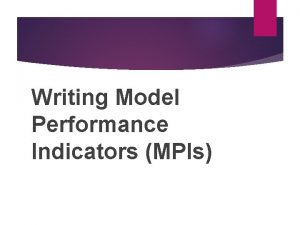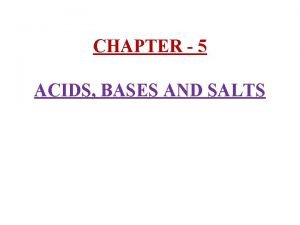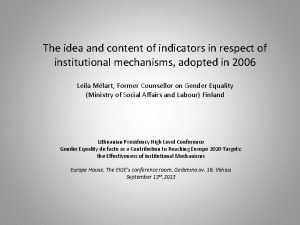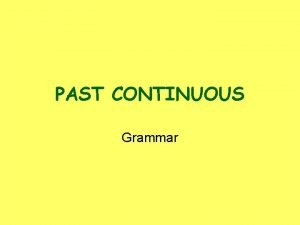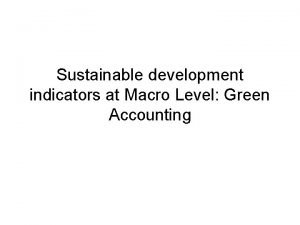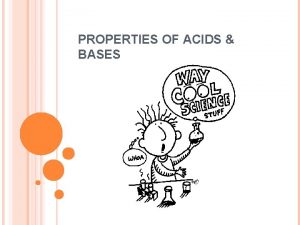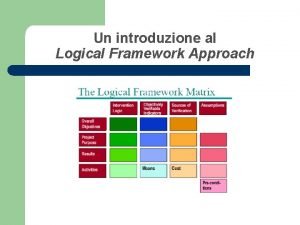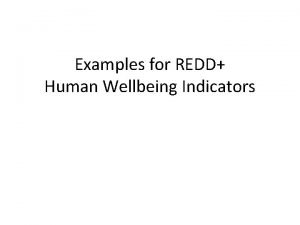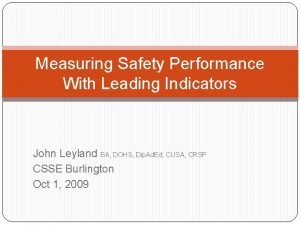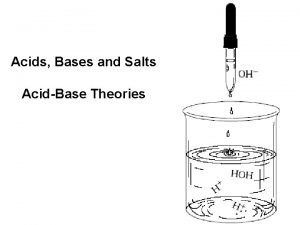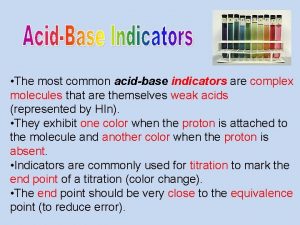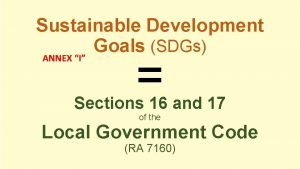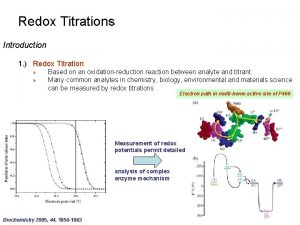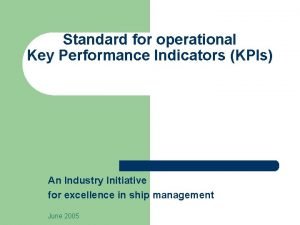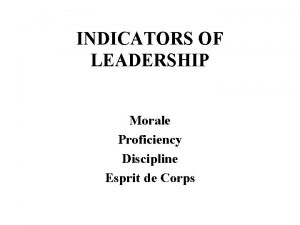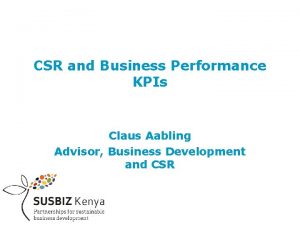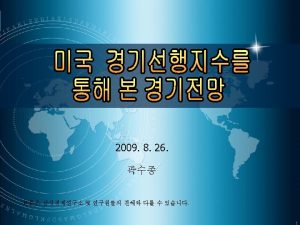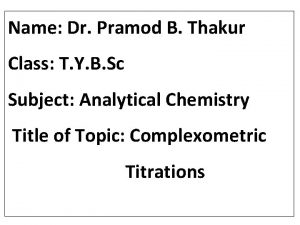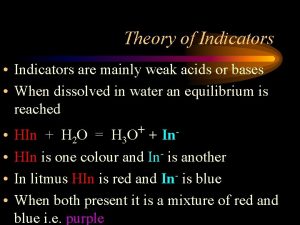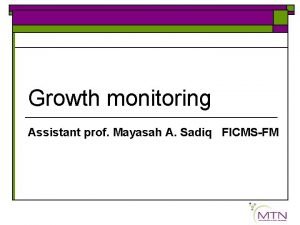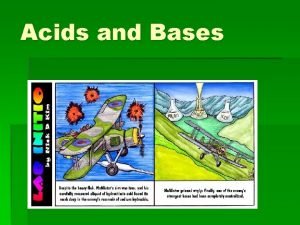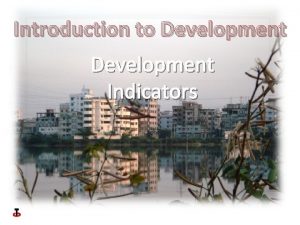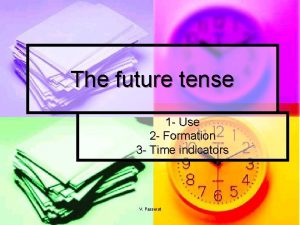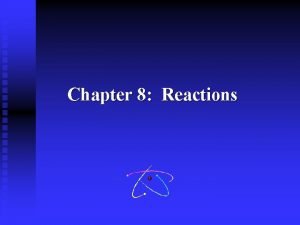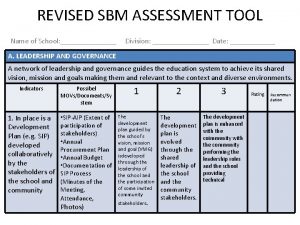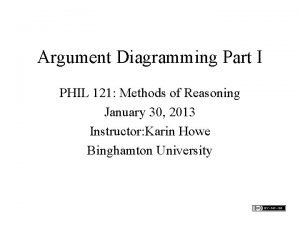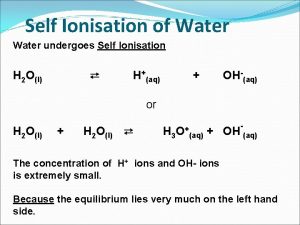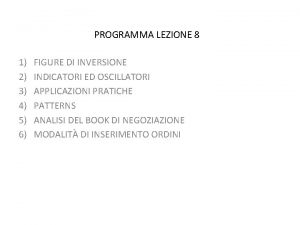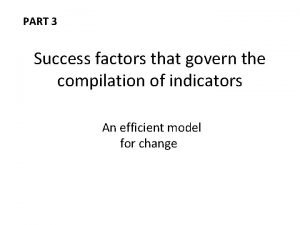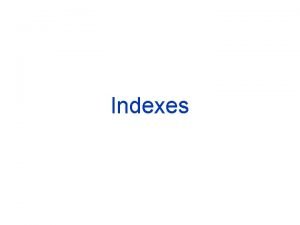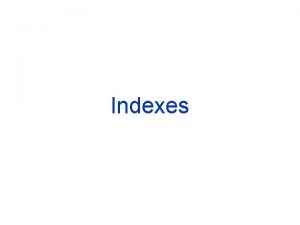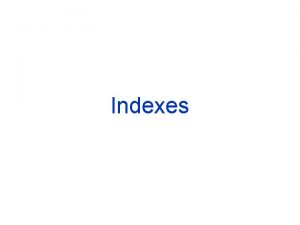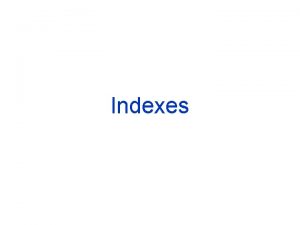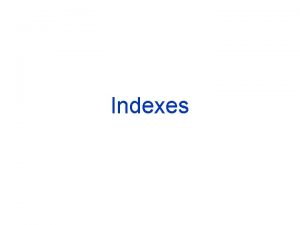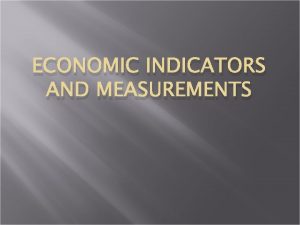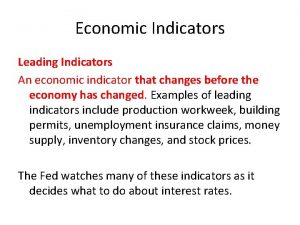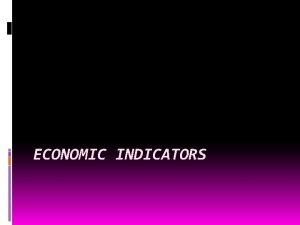Economic Indexes Indexes in statistics Indexes are indicators





















































































































- Slides: 117

Economic Indexes

Indexes in statistics Indexes are indicators of size comparison of any socio-economic process. Index number measures how much a variable changes over time or in space

All indexes can be classified as: single and composite n time and territorial n aggregate and average n with chain base and fixed base n with chain weight and fixed weight n with variable structure and constant structure n

Indexes in statistics Index number can be calculated as the ratio of the current value to the base value. The resulting number is usually multiplied by 100 to express the index as a percentage

Indexes in statistics n To calculate an index number it is necessary to compare two identical periods of time, for example month and month, year and year

The index method is applied to solve the following problems: study the change of the event in time n carry out spatial comparisons n measure plan fulfillment n indicate the degree of structural changes influence n

Indexes are subdivided into individual (single) and composite (summary)

Individual (single) index is applied to find out the change degree of a separate element of a complex socio-economic process

Individual (single) index n It turns out to be a result of a comparison of the one commodity process. Single index is the dynamic ratio DR, plan ratio PR, plan fulfilling PF or ratio of comparison RCom

Notations P – price of a good, q – quantity of sold (produced) goods; pq – value (monetary worth) of sold (produced) goods, turnover; z unit cost (себестоимость); zq – total cost, t labor intensiveness (трудоемкость) of producing a good; w – labor productivity; T=tq - labor inputs, or number of employed persons; h = zq/pq – cost per one money unit of good production…

Notations f – individual wage or salary; F –wages & salaries fund (compensation of employees); S – cultivated area; y - crop yield; Sy - total harvest, Q – total amount of production or total sales, in natural units or in cost units

Individual (single) index n There are many single indexes, first of all we will consider single price index, single quantity index, single value index, single unit cost index, and single labor intensiveness index

Single price index n n Single price index is expressed by the ratio of price per one unit for one period to the price per one unit of the same commodity for another period. It shows by how many percent the price has been reduced or increased

Individual price index

Single quantity index (Individual index of physical volume of goods turnover) where q 1, q 0 – quantities of sold (produced) goods in current and base periods, respectively

The Single quantity index (Individual index of physical volume of goods turnover) n shows by how many percent the quantity volume has been increased or reduced. Multiplying the single price index and the single quantity index gives us the single value index:

Individual index of goods turnover (the single value index) where P 1 q 1, P 0 q 0– values for current and base periods of time, respectively

The single value index (individual index of goods turnover) shows by how many percent the turnover (of total monetary worth) for one commodity has been increased or reduced.

Goods I period Price Quantity per unit, rub. А B C 20 30 15 7500 2000 1000 II period Price per unit, rub. 25 30 10 Quantity 9500 1, 25 1, 27 1, 58 2500 1, 25 1500 0, 67 1, 5 1, 00 Find the change of prices, sales volumes and turnover for each commodity and for all commodities

Single price index for commodity A: Price of commodity A has increased by 25%

Single quantity index for commodity A: Sales volume of commodity A has increased by 26. 7%

Single value index for commodity A: Total monetary worth (turnover) of commodity A has increased by 58. 3%

We can say that the turnover of commodity A has increased by 58. 3% because the sales volume has increased too by 26. 7%, and the price per unit has increased by 25%

Thus, the change of turnover consists of the price change and quantity change: Turnover, pq 26. 7% Volume, q 58. 3% Price, p 25%

Single cost indexes The next indexing system characterizes the change of total cost, unit cost and quantity volume, it includes single unit cost index, single quantity index and single total cost index

Single unit cost index shows by how many percentages the cost per one unit has changed: where z 1, z 0 – unit cost in current and base periods, respectively. Single quantity index has been considered above

Single total cost index is calculated by the following equation: where z 1 q 1, z 0 q 0 – - total cost for current and base periods, respectively

Single labor intensiveness index (индекс трудоемкости) and single quantity index are joined by the single labor inputs index

Single labor intensiveness (трудоемкости) index shows by how many percent the labor intensiveness increased or reduced

This index is an exception to the rule because for constructing it, the labor intensiveness for base period has to be divided by the labor intensiveness for the reporting period:

Single quantity index

Single labor inputs index could be calculated by dividing the single quantity index by the single labor intensiveness index:

The above indexes are used for analysis of one commodity process. However, to analyze commodity set the composite (общие) indexes are required. Composite index combines the individual indicators such as price, quantity and value. Composite index can be expressed by aggregate or average formulas

General (composite) index is the relative indicator characterising change of the complex phenomenon, consisting of the elements which can not be added directly

The simplest form of a composite index is an aggregate index. An aggregate index is calculated by adding the elements in the composite for the given time period and then dividing this result by the sum of the same elements during the base period

, Aggregate value index can be calculated using the following equation: where - total turnover or total monetary worth of all commodities for base and current periods of time, respectively

, The aggregate quantity index and the aggregate price index are named weighted aggregate indexes

, The aggregate quantity index is calculated by adding the volume of all elements in comparable prices for the given time period and then dividing this result by the sum of the same elements during the base period: where - comparable price (prices for the same period, usually base period)

The General index of physical volume of goods turnover The index shows how the total receipts change as the result of change in quantity of goods sold

weighting n The weighting allows us to improve the accuracy of the general quantity estimate based on our data set. For constructing the aggregate quantity index, the influence of price should be excluded by means of price fixing during the base period

The idea of constructing the general price index The general price index shows how the prices on all considered commodity groups vary on average. It is impossible to add directly prices of various goods, it is necessary to choose a certain indicator to make economic sense in summation action. We use goods turnover or a profit in the role of such an indicator

The goods turnover size is influenced by two factors: n price level; n quantity of goods sold. As we are interested to measure only the change of prices, so influence of the second factor should be eliminated. For this purpose the quantity of goods sold is fixed at constant level:

Two variants are possible: 1. The quantity of the goods sold is fixed at level of the accounting period: where - Paashe index

2. The quantity of the goods sold is fixed at level of the basic period: where - Laspeyres’ price index

Aggregate price index in Russian statistics is calculated using the Paashe formula: where - quantity volume of each element for the current period and weighting factor

For constructing the aggregate price index the influence of volume should be excluded by quantity fixation during the current or reporting period. The numerator of the aggregate quantity index and the denominator of the aggregate price index are the same. It expresses the possible total n monetary worth without price changing n

To get a uniform result Fisher's index is used which is calculated as simple geometric mean from indexes of Paashe and Laspeyres:

These indexes represent a system:

or

I period Goods А B C Total Price per unit, rub. 20 30 15 Quantity 7500 2000 1000 - - II period Price per unit, rub. 25 30 10 Quant -ity 9500 2500 1500 - - 150000 237500 190000 187500 60000 75000 60000 15000 22500 10000 225000 327500 287500 257500

The aggregate value index: The total monetary worth (total turnover) has increased by 45. 6%. Why? The prices and sales volume have changed

The aggregate quantity index: Thus, the total monetary worth (total turnover) has increased by 45. 6% while the sales volume has increased by 27. 8%

The aggregate price index: Thus, prices on three commodities have increased by 13. 9%

Weighted aggregate quantity index and weighted price index turn into aggregate value index: Thus, the total monetary worth (total turnover) has increased by 45. 6% while prices increased by 13, 9%, and the sales volume has increased by 27. 8%

To construct the aggregate indexes it is recommended to apply the following rule: n Constructing the index quantitative indicator, the weights of base period should be used. The example of this index is aggregate quantity index. Constructing the index of qualitative indicator, the weights of reporting period should be used. The examples of this index are aggregate price index, aggregate unit cost index, and aggregate labor intensiveness index

The factorial analysis n For the analysis of influence of separate factors on a goods turnover rate of growth we take a difference between numerator and a denominator of a corresponding general index.

1. Absolute change of goods turnover (numerator minus denominator from the value index of goods turnover):

Factorial analysis n The goods turnover rate of growth occurs under the influence of two factors: changes of quantity of the goods sold and price change for a commodity unit. The sum of the rates of growth under the influence of these factors should be equal to the general increase in value of goods turnover.

Factorial analysis n For reception of comparable results it is recommended to observe such sequence of inclusion of factors in the analysis: in the beginning there are quantitative factors (in our case q), then qualitative (P).

2. Absolute change in goods turnover at the expense of quantity change of the goods sold (numerator minus denominator of the general physical volume of goods turnover index according to Laspeyres):

3. Absolute change of goods turnover at the expense change of the prices (numerator minus price index denominator according to Paashe): Here two cases are possible: n n economy or buyers over-expenditure at the expense of the price change

Interrelation of absolute values

Average harmonious index


In this case the general price index is calculated as average harmonious value from individual indexes, where as scales act the values of goods turnover of the accounting period.

Goods Realization in the current period, rub. Price change % А Б В 23000 21000 29000 +4, 0 +2, 3 -0, 8 Total 73000 - 1, 040 22115 1, 023 20528 0, 992 29234 - 71877

Prices of given commdity group in the current period in comparison with the basic period have grown by 1, 6%

Average arithmetic index


In this case the general index of physical volume of goods turnover is calculated as the average arithmetic value from individual indexes of physical volume of goods turnover where as scales act values of goods turnover of the basic period:

Goods Realization Change of the during the physical volume of current realization, % period, rub. А Б В 46000 27000 51000 -6, 4 -8, 2 +1, 3 Total 124000 - 0, 936 43056 0, 918 24786 1, 013 51663 - 119505

Physical volume of realization of given goods on average decreases by 3, 6%

Indexes of average levels (indexes of variable structure, constant structure and structural shifts)

Sale of goods by several firms is considered. Each firm has certain volume of sale and the price. It is required to analyse, how the average price of the goods changes.

The average price index (the index of variable structure)

From the formula of an index of variable structure changes it is visible that the average price changes as a result of action of two factors: n change of the prices in different firms; n change of relative density of firms in total amount of realisation of the goods. Hence, the index of variable structure can be spread out on two subindexes, each of them characterises actions of one of these factors.

1. A subindex - an index of constant structure. It shows, how the average price changes as a result of price changes in different firms.

2. A subindex - an index of structural shifts. It shows, how the average price changes as a result of relative density change of firms in total amount sale of the goods (as a result of structural shifts):

The Listed indexes form system

1. Absolute change of the average price estimated as a difference of a dividend a divider of an index of variable structure.

2. Change of the average price at the expense of price changes in different firms is estimated as a difference of a dividend a divider of an index of the fixed structure:

3. Change of the average price at the expense of structural shifts is estimated as a difference of a dividend a divider of an index of structural shifts:

The listed absolute values form a system:

Three-factorial indexes

Cost of material inputs on production depends from: q -quantities of issued production; m -specific expenses of raw materials and materials; p -the prices for raw materials and materials.

z where – material inputs on manufacture.

Index of material inputs on manufacture

Index of the output volume

Index of specific expenses

Index of the raw materals’ prices

These indexes form a system

Territorial indexes

During construction of territorial indexes there are questions on base of comparison and object at which level it is necessary to fix index weight. These questions can be answered, proceeding from research specific targets. For example, it is necessary to compare price levels of two regions (regions A and B).

As scales we take quantity of the goods sold in region A.

As scales we take quantity of the goods sold in region B.

The given indexes are NOT interconnected among themselves:

For reception of uniform result the total sales volume of two regions act as scales.

It is possible the construction of a price index on the basis of method called indirect standardization.

where regions. -average price for two

An index of physical volume of goods turnover. где - веса.

Goods turnover index of two regions.

Chain and basic indexes

If indexes are calculated for the value which is more than two numbers of the periods of time, so they can be received in the basic and chain way. We will consider construction of basic and chain indexes on an example of physical volume of goods turnover index.

Individual indexes

Let's consider realisation of any goods during the different periods of time.


-Quantity of the goods sold in the basic period; -Quantity of the goods sold in the first period and so on.

Product of chain indexes gives a basic index of last period of time.

General indexes

The interrelation noted above is unconditional only for individual indexes. For the general indexes this interrelation will be fair only when the general indexes will be calculated with so-called constant scales.

Let there is data about realisation of the several goods for four periods of time.

System of basic indexes First period is considered as a basic.

System of chain indexes with constant scales


System of chain indexes with variable scales


Iq = i q q 0 p 0 / q 0 p 0 = =119 505 / 124 000 = 0, 964 or 96, 4 % Physical volume of sales of given goods decreased on average by 3, 6 %
 Antigentest åre
Antigentest åre Gdp types
Gdp types Introduction to statistics what is statistics
Introduction to statistics what is statistics Faculty of cybernetics statistics and economic informatics
Faculty of cybernetics statistics and economic informatics Uses of index numbers
Uses of index numbers Uses of security market indicator series
Uses of security market indicator series Scale scores convey more information than index scores.
Scale scores convey more information than index scores. Productivity index
Productivity index Example of logical view of database
Example of logical view of database Differentiating factors in constructing market indexes
Differentiating factors in constructing market indexes Profitability indexes
Profitability indexes Interplanar distance formula
Interplanar distance formula Indexes
Indexes Sys.partitions
Sys.partitions Stoxx blue chip
Stoxx blue chip Economic growth vs economic development
Economic growth vs economic development Economic development vs economic growth
Economic development vs economic growth Chapter 1 lesson 2 our economic choices worksheet answers
Chapter 1 lesson 2 our economic choices worksheet answers Model performance indicators
Model performance indicators Global indicators
Global indicators Site:slidetodoc.com
Site:slidetodoc.com Key performance indicators for capacity building
Key performance indicators for capacity building Indicators of good research
Indicators of good research Futur simple indicators
Futur simple indicators Jiaf guidance
Jiaf guidance Kpi templates
Kpi templates Mch indicators full form
Mch indicators full form What is mrp
What is mrp Class domains dimensions and indicators
Class domains dimensions and indicators Nonprofit dashboard samples
Nonprofit dashboard samples Boston police
Boston police Pmcf deped
Pmcf deped Key financial indicators
Key financial indicators Common salt taste
Common salt taste Isi essential science indicators
Isi essential science indicators Respect indicators
Respect indicators Present continuous indicators
Present continuous indicators Qualitative indicators
Qualitative indicators What are indicators
What are indicators Gresb summary
Gresb summary Indicators of present simple
Indicators of present simple Air brake stroke indicator
Air brake stroke indicator Climate analysis indicators tool
Climate analysis indicators tool Mch indicators full form
Mch indicators full form Olfactory indicator
Olfactory indicator What is insider trading and market manipulation.
What is insider trading and market manipulation. Arguments and explanations
Arguments and explanations Sap ps overview
Sap ps overview Kenya professional teaching standards (kepts)
Kenya professional teaching standards (kepts) Quadro logico
Quadro logico Wellbeing indicators examples
Wellbeing indicators examples 5 indicators of a chemical reaction
5 indicators of a chemical reaction South carolina teacher evaluation system
South carolina teacher evaluation system Indicators of potential workplace violence:
Indicators of potential workplace violence: Present continuous indicators
Present continuous indicators Leading indicators
Leading indicators Key performance indicators engineering
Key performance indicators engineering Gpw13
Gpw13 Prevention quality indicators
Prevention quality indicators Indicator of health
Indicator of health Acid base indicators table
Acid base indicators table Poa indicators are assigned in the inpatient setting for
Poa indicators are assigned in the inpatient setting for Revenue cycle kpis
Revenue cycle kpis Characteristics of ihrm
Characteristics of ihrm Livelihood outcome indicators
Livelihood outcome indicators Professional learning focus
Professional learning focus Mch indicators full form
Mch indicators full form Indicators are complex molecules that themselves are
Indicators are complex molecules that themselves are How are indicators used to detect macromolecules?
How are indicators used to detect macromolecules? Community health status indicators
Community health status indicators Development indicators
Development indicators Process indicators enable a software project manager to
Process indicators enable a software project manager to Identify three effects of low humidity s190
Identify three effects of low humidity s190 Lgu scorecard indicators
Lgu scorecard indicators Site:slidetodoc.com
Site:slidetodoc.com Indicators of espionage
Indicators of espionage Passive present continuous
Passive present continuous Key performance indicators for shipping industry
Key performance indicators for shipping industry Cisco ios ping indicators
Cisco ios ping indicators Indicators of esprit de corps include
Indicators of esprit de corps include Csr performance indicators
Csr performance indicators Insider threat training slides
Insider threat training slides Physiological indicators
Physiological indicators Leading and lagging indicators powerpoint template
Leading and lagging indicators powerpoint template Chromophore theory of indicators
Chromophore theory of indicators Indicators of potential workplace violence
Indicators of potential workplace violence Evaluation indicators examples
Evaluation indicators examples Resi-test cleaning indicator
Resi-test cleaning indicator Pki performance key indicators
Pki performance key indicators Treasury kpi metrics
Treasury kpi metrics Ahrq quality indicators toolkit
Ahrq quality indicators toolkit Behavioral indicators of love
Behavioral indicators of love Coincidental indicators
Coincidental indicators Complexometric titration definition
Complexometric titration definition Theory of indicators
Theory of indicators Indicators of present perfect tense
Indicators of present perfect tense Indicators of past perfect tense
Indicators of past perfect tense Media development indicators
Media development indicators Growth indicators z score
Growth indicators z score Substance whose water solution conducts a current
Substance whose water solution conducts a current Development indicators
Development indicators Gri sector supplements
Gri sector supplements Homemade indicators
Homemade indicators Key performance indicators for lecturers
Key performance indicators for lecturers Model performance indicators wida
Model performance indicators wida Helping verb in future tense
Helping verb in future tense 5 indicators of a chemical reaction
5 indicators of a chemical reaction Sbm assessment tool 2021 excel
Sbm assessment tool 2021 excel Ahrq quality indicators
Ahrq quality indicators Brake stroke indicator
Brake stroke indicator Premise indicators
Premise indicators Itu world telecommunication indicators database
Itu world telecommunication indicators database Ph 3 acid or base
Ph 3 acid or base Lagging indicators traduzione
Lagging indicators traduzione Indicators of espionage
Indicators of espionage Success indicators
Success indicators Pl focus
Pl focus Academic performance indicators
Academic performance indicators

